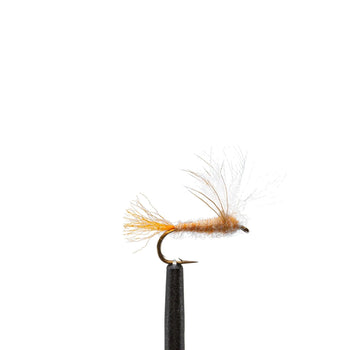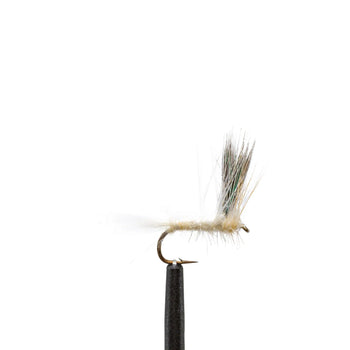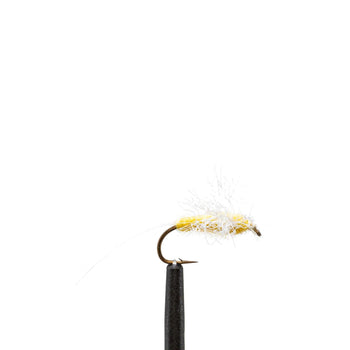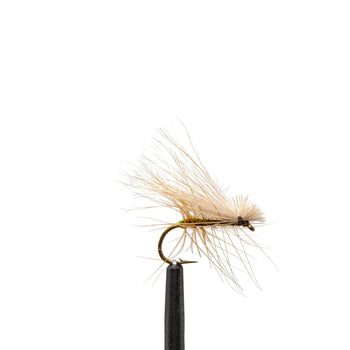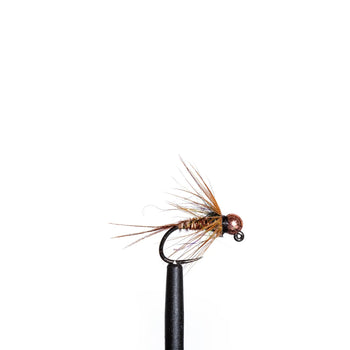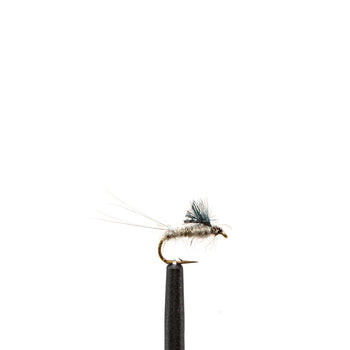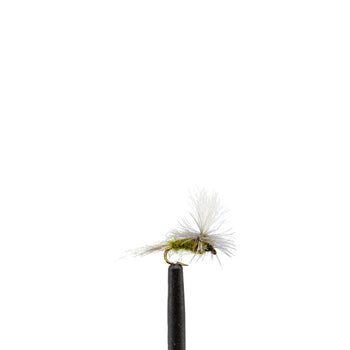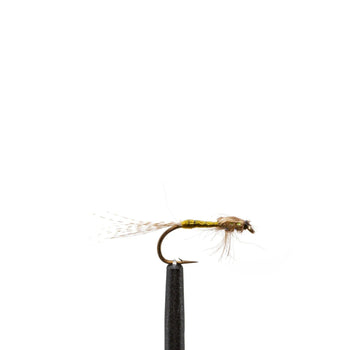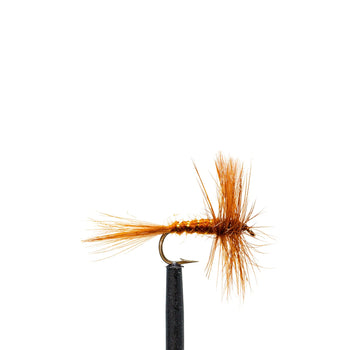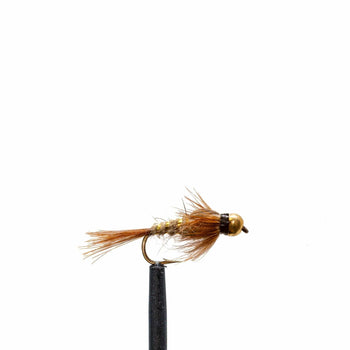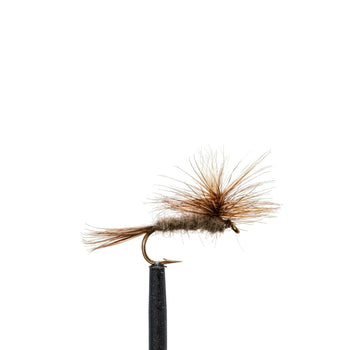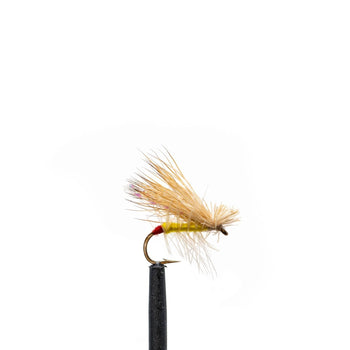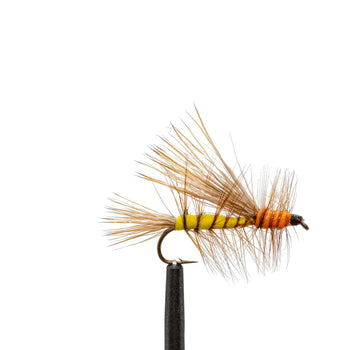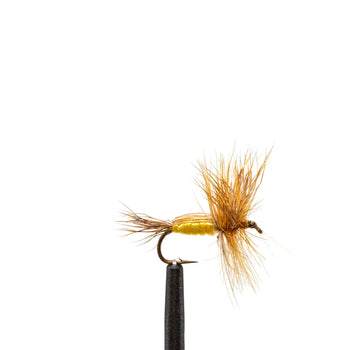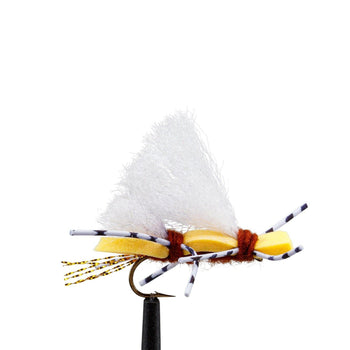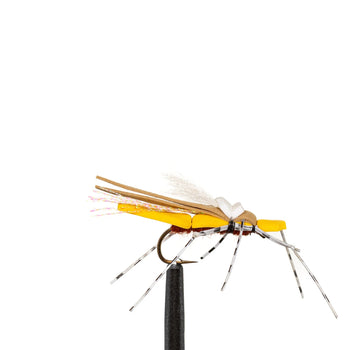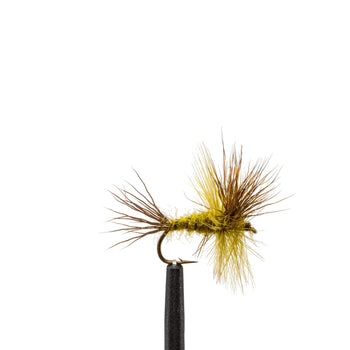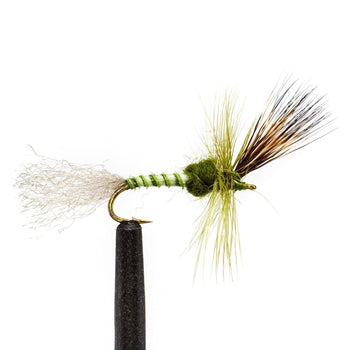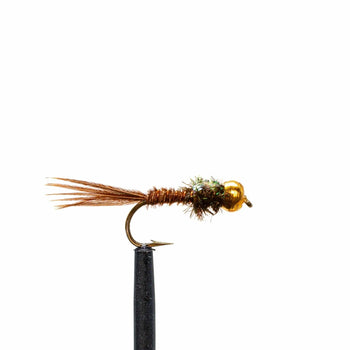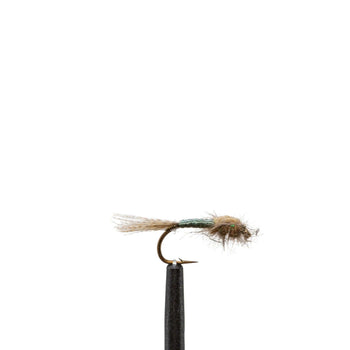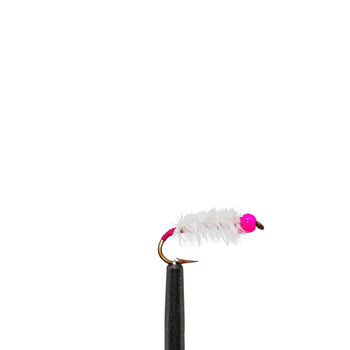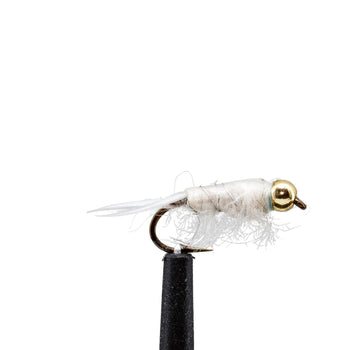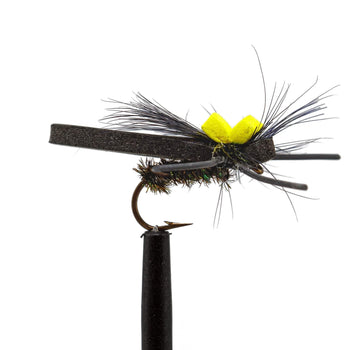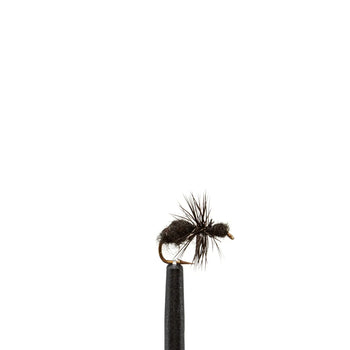Match the Spring Hatch: Top 10 May Hatches Every Fly Angler Should Know

May is a magical—and pivotal—month for fly fishing across the U.S. Rivers shake off winter’s icy grip, flows surge with snowmelt, and aquatic life kicks into high gear. From the West to the Midwest, Northeast, and Appalachia, May delivers dynamic water conditions, explosive insect activity, and the season’s first whispers of terrestrial life. Overcast days and warm afternoons bring the surface alive with overlapping hatches, turning trout into eager, opportunistic feeders.
To help you stay dialed in, we’ve rounded up the 10 most important May hatches to watch—complete with the best fly patterns, tactical tips, and regional insights to match them. Whether you're drifting a PMD emerger mid-morning, chasing caddis in the afternoon, or exploring new waters, this guide will keep your box sharp and your drifts deadly.
1. Pale Morning Dun (PMDs)
PMDs are a staple hatch throughout the U.S., especially in tailwaters and spring creeks. These light-colored mayflies (sizes 14–18) hatch mid-morning to early afternoon and often bring selective trout to the surface. Their long emergence window and multiple life stages on the water make them a favorite target for experienced anglers—and discerning fish.
Tips & Techniques:
- Focus on riffles, seams, and transitions from shallow to deeper water where duns are likely to emerge.
- Use 5X–6X tippet and a longer leader to improve presentation during slow or clear water conditions.
- Adjust between nymphs, emergers, and spinners as the hatch progresses throughout the morning and early afternoon.
Must-Have Patterns:
- PMD Sparkle Dun (Sizes 14–18): A low-riding emerger imitation with a trailing shuck. Deadly in the surface film during active emergence. Fish it dead-drift with a reach cast or downstream presentation to avoid micro-drag.
- PMD Parachute (Sizes 14–18): A high-floating dry with upright post and hackle for visibility in riffled water. Best used during the peak of the hatch when fish are targeting adult duns on top.
- PMD Spinner (Sizes 16–18): A spent-wing pattern for calm water and evenings. Present it with a long, delicate drift in slicks or back eddies where trout sip gently near the surface.
📌 Pro Tip: If you see rises with no visible duns, it’s likely fish are targeting emergers—switch to a Sparkle Dun or RS2 to match their preference.
2. Mother’s Day Caddis
Mother’s Day Caddis hatches are one of the most prolific and exciting events of the spring season, often blanketing Western and Midwestern rivers in mid-May. These caddisflies (sizes 14–16) emerge in huge numbers, and trout often feed aggressively on both emerging pupae and fluttering adults.
Tips & Techniques:
- Fish soft hackles or pupae subsurface before the hatch fully develops.
- Switch to skating or twitching dries as trout begin to rise.
- Target seams, riffles, and back eddies where adults collect in numbers.
Must-Have Patterns:
-
Elk Hair Caddis – Olive (Sizes 14–16): A buoyant classic that imitates fluttering adults. Excellent for skating or twitching through riffles or fishing dead-drift near foam lines.
- Beadhead Soft Hackle Pheasant Tail (Sizes 14–18): A high-performance attractor nymph with a buggy dubbed body and flashy ribbing. The purple coloration and tungsten bead make it especially good in stained or glacial runoff conditions. Fish it deep under an indicator or tight-line style.
- Deer Hair Sparkle Caddis (Sizes 14–16): A low-riding adult imitation with a trailing shuck. Great for targeting trout feeding selectively on emerging or crippled caddis. Fish it with a slow dead drift or slight twitch to suggest motion in slower seams.
📌 Pro Tip: If trout are slashing or swirling near the surface but not taking dries, they’re often keyed in on emergers—swing a soft hackle or drop a sparkle caddis below a high-floating dry.
3. Blue-Winged Olive (BWOs)
BWOs are a reliable spring hatch found across the U.S., especially in tailwaters and spring creeks. These small, olive-bodied mayflies (sizes 18–22) are most active on cool, overcast days, often drawing picky trout to the surface in slow seams and tailouts.
Tips & Techniques:
- Target slower currents, foam lines, and soft seams where emergers collect.
- Use long, fine tippet (6X or 7X) for subtle presentations and reduced drag.
- Fish emergers early in the hatch, and switch to dries or spinners when surface activity increases.
Must-Have Patterns:
- RS2 (Sizes 18–22): A sparse, trailing-shuck emerger that fools picky trout feeding just below the surface. Fish it on a dead drift or swing it slightly at the end of your drift for subtle motion.
- Parachute Blue Wing Olive (Sizes 16–20): A high-floating classic with parachute hackle and a visible post for easy tracking in riffled water. Use this when trout are actively sipping duns off the surface.
- WD-40 – Olive (Sizes 18–22): A simple, impressionistic emerger ideal for tailwaters and pressured fish. Fish it as a dropper beneath a dry or tight-line it through slower water just below the film.
📌 Pro Tip: Don’t overlook overcast or drizzly days—BWOs thrive in that weather, and fish feed longer and more confidently in low light.

4. March Browns
March Browns are one of the larger mayflies to hatch in spring, typically emerging sporadically throughout early to mid-May. These size 12–14 insects provide an important food source in riffles, glides, and pocket water. Their sporadic emergence can trigger explosive rises, especially when duns drift naturally in broken current.
Tips & Techniques:
- Fish nymphs like Hare’s Ears before the hatch begins, especially in deeper runs.
- Watch for splashy takes in riffles as duns emerge—switch to a high-riding dry when rises appear.
- Let your dries drift naturally, then twitch slightly at the end to mimic a struggling adult.
Must-Have Patterns:
- March Brown (Sizes 12–14): A simple and effective adult imitation with a natural silhouette and upright wings. Fish it in pools, glides, or foam lines when trout are selectively feeding on duns.
- Beadhead Gold Ribbed Hare's Ear (Sizes 12–16): A classic, buggy nymph that imitates March Browns, other mayfly nymphs, and even caddis larvae. Fish it under an indicator or on a two-fly nymph rig.
- Parachute Adams (Sizes 12–16): A versatile dry that works as a general mayfly imitation. Ideal when fish are feeding on top but you're unsure which hatch they’re keyed into.
📌 Pro Tip: March Browns often hatch one at a time, not in huge numbers—don’t let the sparse riseforms fool you. One well-placed drift can connect with a quality fish.
5. Little Yellow Sally
Little Yellow Sallies are small stoneflies (sizes 14–18) that begin hatching in late May, often in the afternoon. These insects emerge in fast water, riffles, and pocket zones, where trout eagerly target them on the surface. Because of their erratic movement and bright coloration, they often produce aggressive strikes.
Tips & Techniques:
- Focus on riffles, seams, and bankside pocket water during warm afternoons.
- Use a dry-dropper setup with a Sally on top and a stonefly or caddis pupa beneath.
- Add subtle twitches to your dry fly to imitate the struggling flutter of a natural adult.
Must-Have Patterns:
- Yellow Sally (Sizes 14–18):A small, high-floating dry fly that mimics adult Sallies in active water. Fish it dead-drift or with a slight twitch through riffles and foam lines.
- Yellow Foam Stimulator (Sizes 14–16): A bushy attractor pattern with strong visibility and buoyancy. Excellent as a dry-dropper anchor in fast water or early hatches.
- Yellow Humpy (Sizes 14–16): A high-floating attractor with a bright yellow body and dense hackle—great visibility and buoyancy in riffles and broken water. Fish it with short drifts near undercut banks and rocky seams.
📌 Pro Tip: Even when you’re not seeing many Sallies on the water, trout will often rise to the silhouette—especially on sunny afternoons when bugs are most active.
6. Golden Stonefly
Golden Stones (sizes 8–12) begin to emerge in late May in many rivers across the U.S., especially in lower-elevation freestones. These large stoneflies crawl from the water to hatch, often near banks or rocky shallows. Even before the hatch peaks, trout will key in on the nymphs and early adult activity—making this a great opportunity to fish big, buggy patterns.
Tips & Techniques:
- Drift nymphs deep through fast water, seams, and pocket zones early in the day.
- In the evening, switch to dries and target banks, foam lines, and shallow edges.
- Don’t hesitate to fish big—a larger silhouette is often what triggers aggressive strikes.
Must-Have Patterns:
- Chubby Chernobyl – Gold (Sizes 8–10): A foam-bodied, high-riding dry ideal for golden stones. Floats all day and works perfectly as a dry-dropper lead in swift water.
- Kaufmann's Stonefly Nymph – Brown (Sizes 6–10): A classic, heavily weighted golden stone imitation with a dubbed thorax and segmented abdomen. Dead-drift through deep slots or use in a two-nymph rig.
- Water Walker – Gold (Sizes 8–10): A realistic dry fly built for visibility and durability. Excellent for bouncing along seams and edges where adult golden stones are likely to fall in.
📌 Pro Tip: Fish will often hold tight to banks and soft water during high flows—don’t overlook side channels and submerged structure when fishing dries.
7. Green Drake
Green Drakes are one of the most exciting hatches of the season. These large mayflies (sizes 10–12) start emerging in late May in cooler rivers and mountain streams, often coinciding with evening light and dropping flows. Their sheer size and clumsy movement make them an irresistible target for big, surface-cruising trout.
Tips & Techniques:
- Fish nymphs and emergers early in the day to cover pre-hatch activity.
- As the hatch progresses, switch to full-bodied dries—especially in broken or riffled water.
- Use long, accurate drifts along banks and current seams in the evening.
Must-Have Patterns:
- Green Drake (Sizes 10–12): A classic full-bodied dry fly that mimics the large, bold profile of adult mayflies. Perfect for fast water and evening hatches. Fish it with long dead drifts or twitch slightly to imitate movement.
- Green Cripple Drake (Sizes 10–12): A low-riding emerger that fools trout feeding on stuck duns. Fish it in the film during the start of the hatch, especially in softer seams and tailouts.
- Beadhead Flashback Pheasant Tail (Sizes 12–14): A classic nymph that doubles as a drake emerger. Drift it deep through riffles or swing it up at the end to mimic emerging insects.
📌 Pro Tip: Green Drakes often hatch in waves—stay late. The last 30 minutes of light can produce some of the most aggressive rises of the year.
8. Midges
Midges are a year-round food source, but they remain particularly important in May—especially in tailwaters, spring creeks, and stillwaters. These tiny insects (sizes 18–22) hatch consistently in the mornings and during cooler weather, often when other bugs are inactive. Though small, they can produce steady action when matched correctly.
Tips & Techniques:
- Use 6X–7X tippet to present these small patterns naturally in slow currents.
- Fish two-fly rigs with a midge pupa below a dry or small attractor.
- Watch for subtle sips or gentle rises—midge takes are rarely aggressive.
Must-Have Patterns:
- Zebra Midge – Red (Sizes 18–22): A slender, wire-bodied midge with silver ribbing that excels in clear water. Fish it below an indicator or as a dropper in two-fly setups.
- Griffith’s Gnat (Sizes 18–20): A high-floating midge cluster imitation for slow or still water. Drift it gently in back eddies or foam lines when fish are sipping on top.
- WD-40 – Dun (Sizes 18–22): A soft emerger that covers midges and small mayflies. Fish it just below the film during active emergence or drop it off a parachute dry.
📌 Pro Tip: Add a small split shot above your dropper to keep it riding low and natural.
9. Scuds & Sowbugs
Though not true hatches, scuds and sowbugs are vital spring food sources in tailwaters, spring creeks, and lakes—especially during runoff. These freshwater crustaceans get stirred up and swept into the drift when flows increase or vegetation dislodges, making May a perfect time to fish them.
Tips & Techniques:
- Fish them deep in seams, weed beds, or spring creek channels.
- Use under an indicator or tight-line them through deeper troughs.
- Slight twitches or swings can simulate swimming motion and trigger strikes.
Must-Have Patterns:
-
Ray Charles – Pink (Sizes 14–16): A flashy, soft-bodied scud imitation that excels in stained water. Drift it near the bottom or swing it near the end of the drift to mimic natural motion.
-
Flashback Scud – Olive (Sizes 14–16): A slightly flashy scud pattern that adds just enough shine to trigger strikes in off-color or pressured water. Best fished dead-drift in slower currents or along weed lines.
- Beadhead Sowbug – White (Sizes 14–16): A buggy, translucent option for clear tailwater conditions. Fish it low and slow in deep channels where trout feed consistently on crustaceans.
📌 Pro Tip: Pair with a heavier fly or split shot in high water to keep your pattern down where fish are holding during runoff.
10. Terrestrials (Ants & Beetles)
While terrestrials aren’t technically hatches, ants and beetles start showing up in late May—especially on sunny days in lowland streams or grassy banks. Trout looking up between aquatic hatches often key in on these easy meals, making them a smart addition to your spring strategy.
Tips & Techniques:
- Focus on overhanging vegetation, grassy undercuts, and shaded banks.
- Use terrestrials as search patterns or in dry-dropper rigs.
- Present with subtle plops and short, natural drifts to mimic a real fall-in.
Must-Have Patterns:
- Snake River Beetle (Sizes 14–16): A regional favorite with a foam body, peacock herl underbody, and rubber legs. Cast tight to the bank and let it drift naturally or twitch slightly for movement.
- Black Ant (Sizes 16–18): A simple, low-profile dry fly that rides flush in the surface film—perfect for technical fish feeding on small terrestrials. Ideal in slow water, back eddies, or spring creeks.
- Royal Chubby Chernobyl (Sizes 10–14): A highly buoyant attractor pattern with red and peacock accents, ideal for mimicking beetles, ants, or small hoppers in choppy water. Great as a dry-dropper lead fly.
📌 Pro Tip: On windy afternoons, terrestrials can outproduce aquatic insects—especially when hatches are sparse.
Ready for May?
May is one of the most dynamic and rewarding months in fly fishing. With overlapping hatches and aggressive trout, success comes down to preparation and presentation. Stock your box with versatile patterns, stay adaptable on the water, and you’ll be ready to match any hatch you come across.
Need to fill gaps in your box? Explore our Spring Fly Collection and Loaded Fly Boxes to stay ready for everything May throws at you.
Related Articles:
- The Ultimate Spring Fly Fishing Guide: Tactics, Hatches & Flies for Success
- Unlock Spring Success: Your Tactical Guide to Early Spring Fly Fishing
- Proven Early Spring Streamer Tactics for Landing More Trout
- Gearing Up for Spring Fly Fishing: Expert Tips, Essential Gear & Proven Techniques


